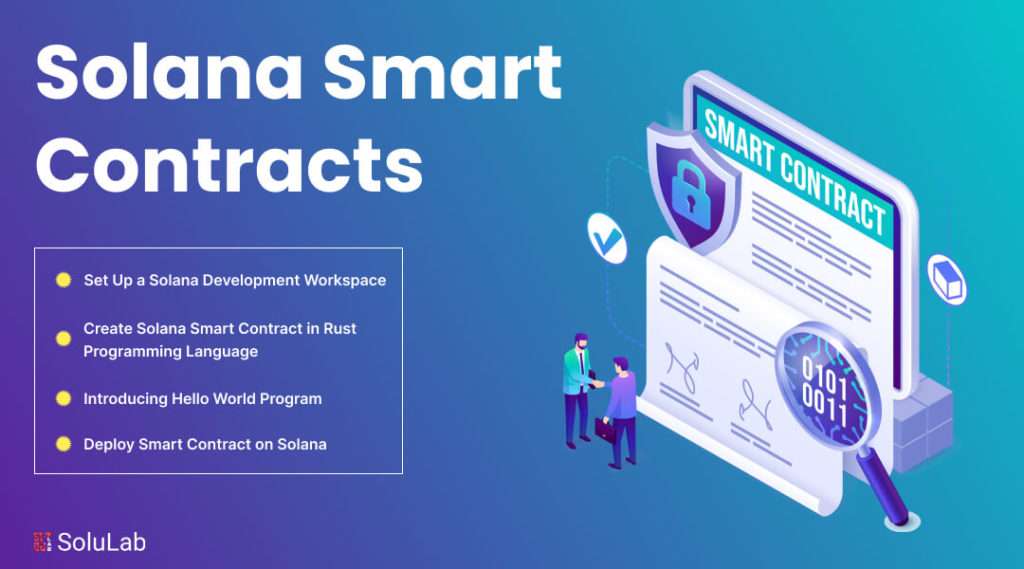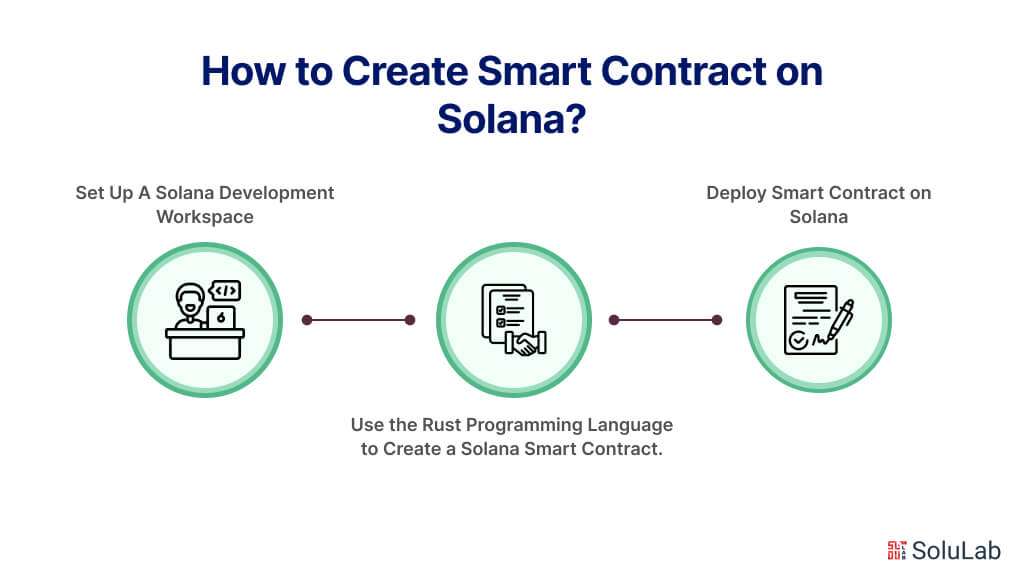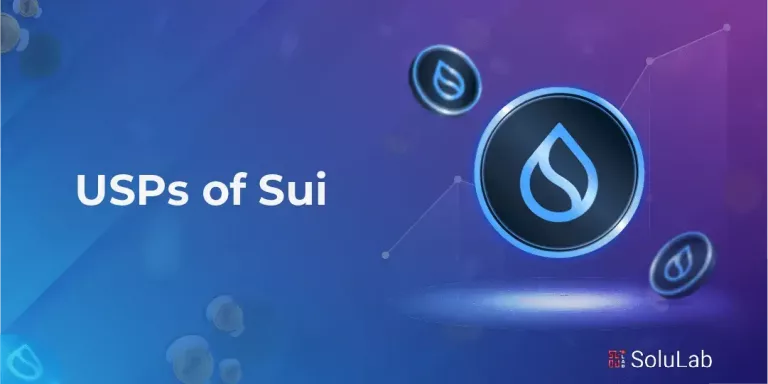
Anatoly Yakovenko proposed Solana in 2017 to solve the scalability problems with the current blockchains. Solana can handle up to 710,000 transactions every second on a typical gigabit network, provided that each transaction is no more than 176 bytes on average. With its amazing capabilities and plethora of innovative characteristics, the platform emerges as the most rapidly growing ecosystem that may be adopted globally.
The architecture of the platform is designed to facilitate growth and frequency-oriented decentralized apps, which are essential for establishing a permissionless financial system. Solana blockchain promises to be the quickest blockchain in the world with a platform that is expanding quickly, with more than 400 projects covering Web3, DeFi, NFTs, and other topics.
Solana is the first to accomplish great speed and scalability with proof-of-history consensus. It gains a place among the best-performing blockchains because of its outstanding throughput and scalability. Solana Network is growing as a result of several new initiatives. We will go over how to build smart contracts on Solana blockchain to explore its fundamental ideas in more detail and realize its full potential. We’ll also examine the process to deploy smart contract on Solana as well.
What is Solana?
Solana is a decentralized blockchain ecosystem meant to address congestion and scalability challenges that plague conventional blockchains. The blockchain’s primary focus is on enhancing scalability, such as increased transaction per second (TPS) and faster confirmation times. It is an open-source initiative that combines groundbreaking technology from Intel, Netscape, Google, and Qualcomm to help Solana maintain high-performance standards.
A timestamp must be agreed upon by blockchains prior to submitting a block. Nodes may take longer to decide since they have to exchange information back and forth to determine the time stamp. In order to retain timestamps and avoid the need for nodes to wait for agreement on a time, Solana came up with a solution that incorporates historical evidence. They have a piece of cryptographic proof for that as well.
What is the Solana Smart Contract Architecture?
Unlike conventional EVM-enabled blockchains, Solana uses a different smart contract paradigm. Code/logic and state are combined into a single, on-chain contract in a conventional EVM-based contract. On the other hand, a smart contract on Solana only has program logic and is always in read-only or stateless mode. After the smart contract is implemented, other accounts may use it and communicate with the program to store data relating to program interactions.
This is a key distinction between Solana smart contracts and typical EVM-enabled contracts: it allows for a logical division of state (accounts) and contract logic (programs). Furthermore, there are significant differences between accounts on Solana and other blockchains, such as Ethereum. Solana accounts hold data, like as wallet information, whereas Ethereum accounts serve just as users’ wallet references.
To improve DApps’ engagement with Solana, Solana also has a CLI and JSON RPC API. Moreover, by using the existing SDKs, decentralized apps may interact with the blockchain and Solana systems.
The development process, shown by the software on the left in the above diagram, enables users to build and publish unique Rust, C, and C++ apps on the blockchain powered by Solana.
Once correctly disseminated, these programs may be utilized by anyone with simple programming skills. To interact with these apps, users must build dApps with one of the available client SDKs and the JSON RPC API.
The second development workflow, Client (bottom left), allows users to design decentralized apps for connecting with deployed programs. These apps interface with these programs via a client SDK. They may be used to create a variety of applications, such as crypto wallets and decentralized exchanges.
How to Create Smart Contract on Solana?

In this part, you will learn how to build smart contract on Solana using ‘Hello world.’ HelloWorld is developed in the Rust programming language and prints to the console. Before beginning development, the initial step is to create a Solana setup on Windows to make the task simpler.
1. Set Up A Solana Development Workspace
Running smart contract code from within Windows is a perplexing experience for a lot of consumers. As a result, it is advised that you install the Ubuntu version of WSL (Windows Subsystem for Linux) so that you may write the code in Windows before compiling the Rust smart contract into a.so file.
Here are the instructions to configure how to develop Solana smart contract setting:
apt upgradeapt updateapt install nodejsapt install npmapt install python3-pipcurl --proto '=https' --tlsv1.2 -sSf https://sh.rustup.rs | shsh -c "$(curl -sSfL https://release.solana.com/v1.5.7/install)"source $HOME/.cargo/envexport PATH="/root/.local/share/solana/install/active_release/bin:$PATH"export RUST_LOG=solana_runtime::system_instruction_processor=trace,solana_runtime::message_processor=debug,solana_bpf_loader=debug,solana_rbpf=debugsolana-test-validator --log
To test it, launch the Hello World program next:
git clone https://github.com/solana-labs/example-helloworld.git cd example-HelloWorld/npm installnpm run build:program-rust
2. Use the Rust Programming Language to Create a Solana Smart Contract.
To deploy smart contracts, you must install the following software:
- NodJS v14 or greater and NPM
- The latest stable Rust build
- Solana CLI v1.7.11 or later
- Git
Introducing the HelloWorld Program
HelloWorld is a software or smart contract that displays output on the console. It also calculates the precise number of times the HelloWorld program has been invoked for the specified account and stores this information on the blockchain. Let us comprehend its notion by dividing the code into portions.
The Solana program’s standard parameters are defined in the first section, which also creates an entry point. Aside from this function, this portion employs borsh (Binary Object Representation Serializer for Hashing) to serialize and deserialize arguments supplied to and received from the deployed application.
Use the given command to setup the HelloWorld program:
use borsh::{BorshDeserialize, BorshSerialize};
use solana_program::{
account_info::{next_account_info, AccountInfo},
entrypoint,
entrypoint::ProgramResult,
msg,
program_error::ProgramError,
pubkey::Pubkey,
};
/// Define the type of state stored in accounts
#[derive(BorshSerialize, BorshDeserialize, Debug)]
pub struct GreetingAccount {
/// number of greetings
pub counter: u32,
}
// Declare and export the program's entrypoint
entrypoint!(process_instruction);
The process_instruction function then receives the program_id, a public key for the program's deployment, and the account info, which corresponds to the account utilized to say hello to.
pub fn process_instruction(
program_id: &Pubkey, // Public key of the account the hello world program was loaded into
accounts: &[AccountInfo], // The account to say hello to
_instruction_data: &[u8], // Ignored, all helloworld instructions are hellos
The ProgramResult contains the primary logic of the program. The ProgramResult displays a message and then selects the required account from the ‘accounts.’ However, we just utilize one account in our example.
Following that, the application assesses if it has authorization to edit data for the specified account.
// The account must be owned by the program in order to modify its data
if account.owner != program_id {
msg!(“Greeted account does not have the correct program id”);
return Err(ProgramError::IncorrectProgramId);
}Finally, the code retrieves the stored number of the existing account, increases it by one, returns the result, and displays a message.
// Increment and store the number of times the account has been greeted
let mut greeting_account = GreetingAccount::try_from_slice(&account.data.borrow())?;
greeting_account.counter += 1;
greeting_account.serialize(&mut &mut account.data.borrow_mut()[..])?;
msg!(“Greeted {} time(s)!”, greeting_account.counter);
Ok(())3. Deploy Smart Contract on Solana
The first step in deploying the software or smart contract is to clone the repository.
git clone https://github.com/solana-labs/example-helloworld
cd example-HelloWorld
You may then switch the current environment to Devnet, which is a test network where Solana developers can construct smart contracts, after completing this step.
solana config set --url https://api.devnet.solana.com You must then make a new keypair after this. Your account may communicate with the deployed apps or smart contracts on the Solana Devnet thanks to this keypair. But this approach is just good for demonstrations and is considered unsafe for key storage. For security purposes, you will thus be encouraged to passphrase.
Solana-keygen new --forceYou may utilize the airdrop program and get the necessary SOL tokens after creating an account. You also need to import a few things in order to deploy the smart contract. To request SOL tokens into your freshly created account, use this command:
Solana airdrop 5You are now prepared to construct the Hello World program. To build it, use the command below.
npm run build:program-rustDeploy the software to Devnet once it has been developed. The output of the preceding command allows you to instruct the commando to launch the program, which appears as follows:
Solana program deploy dist/program/HelloWorld.soWith that, the Hello World applications and their respective program ID have been successfully deployed to Devnet. The Solana Devnet Explorer allows you to authenticate the software.
What Makes Solana Programs Superior Than Other Blockchains’ Smart Contracts?
The details provided above concerning Solana are all comparable to those found on Ethereum. Still, Solana is seen as the most direct competitor or replacement for Ethereum. Considering the blockchain’s commonalities and the sheer number of apps available for Solana, you might be asking why this is the case.
This is the cause. Exorbitant transaction fees, which may occasionally reach hundreds of dollars, especially during network congestions, have long been an issue for Ethereum because Solana can process more transactions per second than Ethereum because, to its higher theoretical throughput, fees are exceedingly low, usually only 0.000005 SOL, or under $ 0.001.
Solana’s developers are confident that its combination of high speeds and low transaction fees will position it as a viable competitor to centralized payment processors like Visa. With a wallet capable of holding SOL and Solana-based tokens such as Phantom or Solet, users gain access to a diverse array of applications within the Solana ecosystem. Whether engaging in decentralized exchanges like Raydium for token swaps or browsing NFT marketplaces like Solanart, users can expect to encounter minimal transaction fees—a stark contrast to Ethereum’s fee structure. This cost-effectiveness is particularly appealing for users seeking to engage in activities such as Solana smart contract audits, where maintaining low overhead is critical.
Concluding Thoughts
The usage of decentralized applications is only increasing as more sectors embrace blockchain and decentralized technologies. Solana is an environment that is quick, scalable, and inexpensive making it easier to construct decentralized apps and smart contracts. It also releases updates often. We developers are thrilled about Solana since it provides a plethora of cutting-edge resources, including frameworks, SDKs, and development tools. Furthermore, the platform offers invasive tools such as Solana CLI, which enables command-line interaction with the protocol, and Solana Explorer, which allows users to search accounts and transactions across several Solana clusters.
SoluLab excels in facilitating the development of Solana smart contracts, leveraging its expertise in blockchain technology to deliver tailored solutions. With a focus on efficiency and reliability, SoluLab guides clients through every stage of the smart contract development process, from conceptualization to deployment. Through collaborative consultation, SoluLab ensures that each smart contract aligns with the client’s unique requirements and objectives, maximizing its potential for success within the Solana ecosystem. By utilizing advanced tools and methodologies, SoluLab streamlines the development process, delivering robust smart contracts optimized for performance and scalability. Whether clients aim to establish decentralized finance protocols, non-fungible token marketplaces, or other innovative applications, SoluLab offers the expertise necessary to realize their vision and execute Solana build smart contract projects. Connect with SoluLab today to embark on your journey and harness the full potential of decentralized finance.
FAQs
1. What is Solana, and why is it gaining popularity in the blockchain space?
Scalability and cheap transaction fees are two of Solana’s best-known features as a powerful blockchain platform. It employs a unique consensus mechanism called Proof of History (PoH) coupled with Proof of Stake (PoS), enabling it to process thousands of transactions per second. Its rapid transaction throughput and low fees have garnered attention from developers and users alike, making it a compelling choice for building decentralized applications.
2. What are Solana smart contracts, and how do they work?
Solana smart contracts are self-executing contracts with the terms of the agreement directly written into code. They run on the Solana blockchain and automate the execution of predefined actions when certain conditions are met. Smart contracts on Solana are programmed in languages like Rust and are executed by the Solana Virtual Machine (SVM). They enable decentralized applications (DApps) to operate autonomously and transparently without the need for intermediaries.
3. How can I build and deploy a smart contract on Solana?
Building and deploying a smart contract on Solana involves several steps. First, you need to write your smart contract code in a supported language like Rust. Then, you compile the code into a Solana program binary (.so file) using the Solana SDK. Finally, you deploy the compiled program to the Solana blockchain using the Solana CLI tools. SoluLab offers comprehensive assistance throughout the entire smart contract development and deployment process, ensuring seamless integration with the Solana ecosystem.
4. What services does SoluLab offer for Solana smart contract development?
SoluLab provides a range of services to facilitate Solana smart contract development. These include consulting, architecture design, smart contract auditing, code optimization, deployment, and ongoing maintenance. SoluLab’s team of experienced blockchain developers and engineers collaborate closely with clients to deliver tailored solutions that meet their specific requirements and objectives.
5. How does SoluLab ensure the security and reliability of Solana smart contracts?
SoluLab employs rigorous testing and auditing processes to ensure the security and reliability of Solana smart contracts. This includes comprehensive code reviews, vulnerability assessments, and simulation testing to identify and mitigate potential risks. Additionally, SoluLab stays up-to-date with the latest developments in blockchain security and compliance standards, ensuring that clients’ smart contracts adhere to best practices and regulatory requirements.






